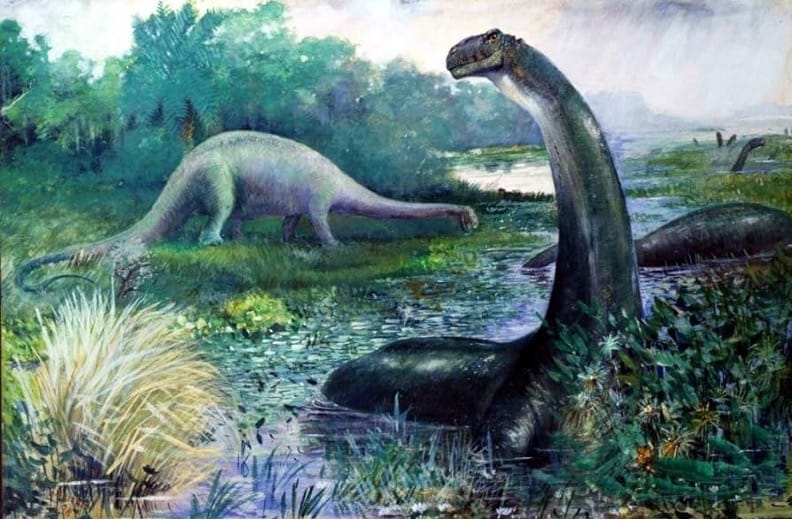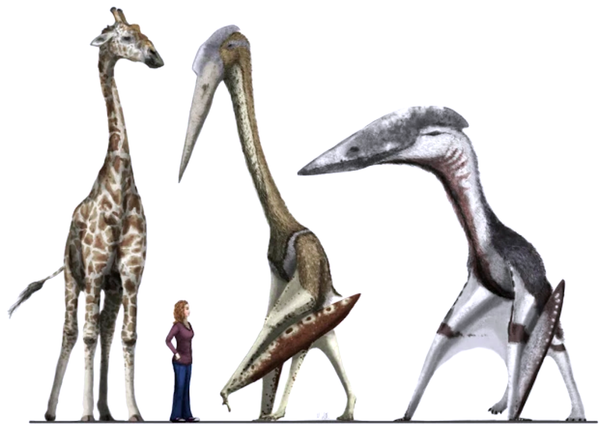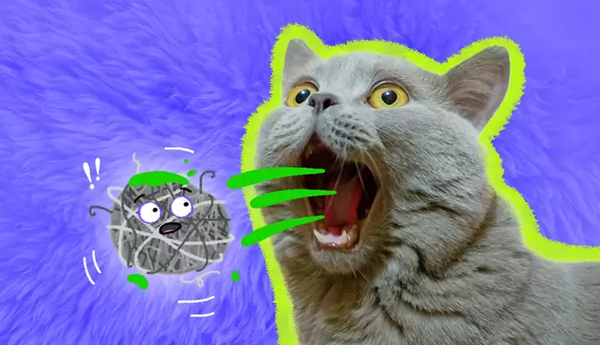The Allure of Vintage Paleoart

By Jackey Lu
With the huge leaps and stride made by Paleontology over the decades we begin to understand extinct animals better than any time before. With the overwhelming amount of creativity within the community a lot of us are beginning to look fondly upon the old outdated paleoart of the last century before 1993. Whilst this could be a general trend in nostalgia and retro things reemerging into public attention there are certainly merits to this trend. And in this post, we’ll just run through a small gallery of the lesser appreciated masters of paleoart in the 20th and 19th century. And mainly focusing their dinosaurs because otherwise we would be here forever.
Charles R Knight
When talking about vintage paleoart one must not skip out on Charles R Knight, who probably created some of the most famous pieces of vintage paleoart in the last century. Even though during the later stages of his life he was experiencing near blindness he still kept on producing murals and pieces. So, let’s look at some of his art.
Though dragged back by the science of the day Knight’s composition for the animals he depict are celebrated for their fidelity and naturalistic. The way that Knight and later Burian depict dinosaur skin and integument is quite progressive, constricting them out of smaller scales whilst on other taxa they speculated wild integuments of armored skins and elaborate frills. Though with a lot of occasions the wrinkly skin and armored skin was not supported by any direct fossil evidence.

Being a late 19th century paleoartist is a blessing and a curse, for Knight, he gets to depict a wide variety of taxa that were the vestiges of the Bone War. Cope and Marsh had discovered many new previously unimaginable creatures out in the American West that were yet to be depicted. Thus, there were no shortages of subjects to depict, this is of course aided on by the fact that Knight was being coached by Edward Drinker Cope early on in his career. The downside of all this is that some species being depicted here would no longer be valid, like Algathamus.

Many of the animals depicted are often minding their own business or engaged in active behaviors which contrast starkly with the more reptilian and slow depiction of dinosaurs in earlier paleoart. Though Knight did not break through the framework being set by science at the time he did capture the public’s imagination of prehistoric animals, and no doubt created several childhood day dreams in the process.
Zedenek Burian
Though the name Zedenek Burian may not be familiar to many casual fans of the paleo-community, but you have most definitely seen his art. Though much of his portfolio is constructed out of non-paleoart much his paleoart gallery are appreciated worldwide, especially in his home country the then People’s Republic of Czechoslovakia. His art style mirrors those artists of the 19th century and had been an artist that bridged the gap between classical paleoartists like Charles R Knight to mid 20th century paleoart right up to the dinosaur renaissance.

As seen with the brachiosaurs above Burians paleoart no doubt passes as vintage paleoarts, but his art do take on a more earthy and naturalistic tone compared to others. Personally, I always find his art to be immensely cozy and always evokes a sense of nostalgia. Of course, many of Burian’s larger murals are often collaborations with other big-name artists for his time in Czech and abroad.

Like mentioned with Charles R Knight, both him and Burian were on the cutting edge of their day, constantly updating their work according to the newest discoveries made. Along with the depiction of dinosaur integument, he also placed his creatures in more active scenarios, having the animals grazing, foraging, vocalizing and constantly on the move. Though they still can’t escape the view of extinct creatures of their time Burian still constructed a colorful and vibrant prehistoric world that left infinite room for imagination.

Another interesting thing about Burian is his ability to keep up with his art. Burian went back and redrawn several of his older pieces to match more current science. The Tarbosaurus seen above is great example of this, as Burian went back and painted another version of this piece with minor alterations. Alas he never quite reached the time of the dinosaur reinssance, but his art lives on to become one the most famous and well acclaimed catalogue of paleoart there ever was.
Benjamin Waterhouse Hawkins
Though Hawkins may be less famous than the other two we have discussed before he is no minor figure. If it were not for Hawkins, the success and achievements of the two before would never ever have come into being. Hawkins is the man responsible for the creation of the Crystal Palace Dinosaurs. If you have no idea what that is then the following image should speak for itself.

Hawkins had plenty experience working on living extent animals be it sculptures or drawings, thus when the time came around for him to design the most cutting edge paleoart for the mid 19th century Hawkins went boldly into the combat.
Though the understanding of dinosaurs and other prehistoric animals were only rudimentary at the time, Hawkins still managed to make the statues feel somewhat life like. Due the extremely scarce material available to early paleontologists many reconstructions were done through collaborations and reference from other living species. In the end, they came up with the giant sluggish almost dragon like depictions of dinosaurs and other extinct animals. The natural poses taken on by the animals are probably credited to the wealth of experience Hawkins had depicting real animals in their habitats.

Though many of these sculptures would not stand the test of time both physically and scientifically, it does not stop them and Hawkins becoming one of the first pioneering attempts in trying to recreate a now gone world long before us. In the process the statues crystalize Hawkins as one of the first household names in paleoart, kick starting many work that follow.
To Conclude...
So, wasn’t that quite the journey down memory lane? Circling back to the title of this article, the allure of vintage paleoart to me is the earthy and weighty feel to all of them. Though restricted to the science to the time these arts never cease to capture the imagination of the public over the grandeur of the prehistoric world that came before us.




